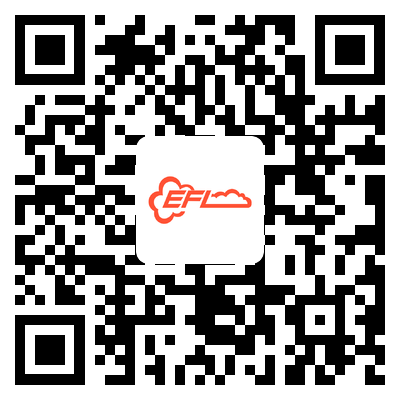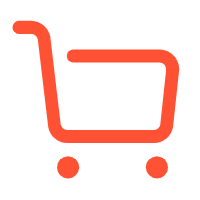
EFL · National City (South Africa)
Chapter One: the basic section
Flag:South Africa

Pretoria Union Building
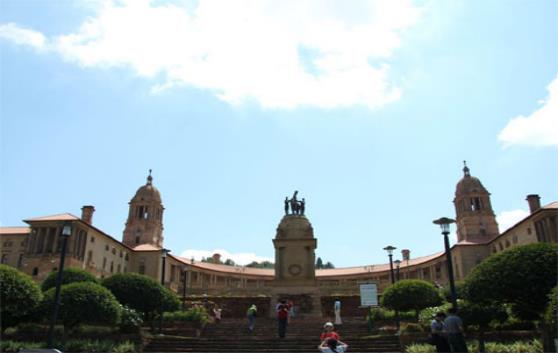
【Country】The Republic of South Africa.
[Area] 1,219,090 square kilometers.
[Population] 59.62 million (mid-2020 estimate from Statistics South Africa). Black, colored, white and Asian, accounting for 80.8%, 8.8%, 7.8% and 2.6% of the total population, respectively. Black people are mainly Zulu, Khosa, Swazi, Tswana, North Soto, South Soto, Tsonga, Venda, Ndebele nine tribes, the main use of the Bantu language. The majority of white people are Afrikaners (mainly Dutch, a mix of French and German immigrants) and British whites, who speak Afrikaans and English. Coloureds are a mix of people born mainly of white ancestry and native black ancestry, who speak mainly Afrikaans. The Asian population is predominantly Indian (the overwhelming majority) and Chinese. There are 11 official languages, with English and Afrikaans as the common language. About 80% of the population believe in Christianity, the rest believe in primitive religions, Islam, Hinduism, etc.
[Capital] Pretoria is the administrative capital with a population of about 3.28 million. Cape Town, the legislative capital, has a population of about 4.01 million; Bloemfontein is the judicial capital with a population of about 760,000 (according to the 2016 South African census).
[Head of State] President Cyril Ramaphosa. He took office in February 2018 and will serve until the general election in May 2019. Then-president Jacob Zuma resigned in February 2018 after being recalled by the ANC. In May 2019, the ANC won South Africa's sixth national election, giving Ramaphosa a second term as president.
New Year's Day (January 1); Human Rights Day (21 March); Good Friday, the Friday before Easter; Easter (from the first Friday after the full moon of the vernal equinox to the following Monday); Family Day (the Monday after Easter); Freedom Day (National Day, April 27); Labor Day (May 1); Youth Day (16 June); Women's Day (August 9); Heritage Festival (24 September); Conciliation Day (16 December); Friendship Day (December 26).
It is located in the southernmost part of the African continent, bordering the Indian Ocean on the east and the Atlantic Ocean on the west. It is bordered by Namibia, Botswana, Zimbabwe, Mozambique and Swaziland on the north. Lesotho is also surrounded by South Africa. The coastline is about 3,000 kilometers long. Most of the country has a savanna climate. 【 Politics 】 The government of national unity with the ANC as the main body pursued the policy of reconciliation, stability and development, properly handled racial contradictions, carried out social reforms in an all-round way, made efforts to improve the political, economic and social status of the black people, and realized the smooth transition from the white regime to the multi-racial coalition regime. The 1994 Interim Constitution was the first constitution in South Africa's history that enshrined racial equality.
[Parliament] The bicameral system is divided into the National Assembly and the National Council of Provincial Affairs (" Provincial Council "for short), both of which serve a five-year term.
[Government] is divided into three levels: central, provincial and local.
[Administrative Districts] The country is divided into 9 provinces, with 278 local governments, including 8 metropolitan areas, 44 regional committees and 226 local committees.
【 Judicial organs 】 The judicial system is basically divided into three major systems: courts, criminal justice and procuratorial organs. The court is composed of the Constitutional Court, the Supreme Court of Appeal, the High Court and the District Court.
Implementation of a multi-party system. There are 13 political parties in the National Assembly.
[Economy] South Africa is a middle-income developing country and also the most economically developed country in Africa. Natural resources are abundant. The financial and legal systems are relatively complete, and communication, transportation, energy and other infrastructure facilities are good. Mining, manufacturing, agriculture and service are all relatively developed, which are the four pillars of the economy. Deep well mining and other technologies are in the leading position in the world. However, the development of various sectors and regions of the national economy is unbalanced, and the characteristics of urban-rural and black-and-white dual economy are obvious. The economy grew at an average annual rate of 3 percent from 1994 to 2004 and more than 5 percent from 2005 to 2007. Affected by the international financial crisis, South Africa's economic growth slowed down to 3.1% in 2008 and 1.8% in 2009, falling into recession for a time. The economy grew by 1.5 percent in 2014, 1.3 percent in 2015, 0.3 percent in 2016, 0.9 percent in 2017 and 0.9 percent in 2018. Major economic data for 2019 are as follows:
South Africa's economy was originally based on farming and animal husbandry. The discovery of diamonds and gold in the second half of the 19th century gave a huge boost to the economy, with mining becoming a pillar industry. Manufacturing grew rapidly in the 20th century, and in 1945 its value exceeded that of mining. After a century and a half of mining development and industrialization, South Africa has built a world-leading mining industry, a relatively complete range of manufacturing and modern agriculture, as well as a fairly complete financial system and infrastructure.
In 2017, South Africa's economic growth rate rebounded to 1.3%, the same as in 2015, due to positive factors such as the overall recovery of the world economy, the recovery of commodity prices, the increasing political certainty in South Africa and the return of investor confidence in South Africa. South Africa's economic growth has declined in 2018 and 2019, to 0.8% and 0.2% respectively.
GDP: about US $363.2 billion.
GDP per capita: about US $6,199.
Annual GDP growth rate: 0.2%.
Currency name: rand.
Exchange rate: US $1 ≈14.43 rand (2019).
(Source: World Bank website)
[Source] Rich in mineral resources, China is one of the five countries with mineral resources in the world. Now there are more than 70 kinds of minerals with proven reserves and exploitation. The reserves of platinum group metals, fluorspar and chromium rank first in the world; gold, vanadium, manganese and zirconium rank second; titanium ranks fourth; phosphate ore, uranium, lead and antimony rank fifth; coal and zinc rank eighth; and copper rank ninth.
Manufacturing, construction, energy and mining are the four major sectors of South African industry. The manufacturing sector has a full range of categories and advanced technology, and its output value accounts for about 17.2 percent of the GDP. The main products are iron and steel, metal products, chemicals, transportation equipment, machinery manufacturing, food processing, textile, clothing and so on. The steel industry is the backbone of South Africa's manufacturing industry, with six major steel confederates and more than 130 steel enterprises. In recent years, uncompetitive industries such as textiles and clothing have shrunk, while emerging export industries such as automobile manufacturing have developed rapidly.
[Agriculture, Animal Husbandry and Fishery] Agriculture is relatively developed, and its output value accounts for 3% of the GDP. Arable land accounts for about 12 per cent of the land area, but only 22 per cent is arable and productive. Agriculture, forestry and fisheries employ about 7 per cent of the population and export earnings from their products account for 15 per cent of non-mining export earnings. Agricultural production is obviously affected by climate change. Maize is the most important food crop. All kinds of canned food, tobacco, wine, coffee and beverage are popular overseas. Rich in flowers, fruits, wine enjoys a high reputation. Animal husbandry is relatively developed, mainly concentrated in the western 2/3 of the country. Livestock species mainly include cattle, sheep, goats, pigs and so on, poultry mainly ostrich, broiler, etc. The main products are eggs, beef, fresh milk, dairy products, mutton, pork, sheep wool and so on. 85% of meat is self-sufficient, and 15% is imported from neighboring countries such as Namibia, Botswana and Swaziland, as well as Australia, New Zealand and some European countries. Sheep wool production is considerable, is the world's fourth largest exporter of sheep wool. Aquaculture accounts for five percent of Africa's total production. South Africa's commercial fishing fleet has more than 500 vessels of all kinds. About 28,000 people are engaged in ocean fishing across the country. The main catch species are mussel, trout, oysters and Cape whiting. The annual catch is about 580,000 tonnes, with an output of nearly 2 billion rand. In addition, South Africa's beekeeping industry is worth about 20 million rand a year.
South Africa practices a free trade system and is a founding member of the World Trade Organization (WTO). The European Union and the United States are South Africa's traditional trading partners, but trade with Asia, the Middle East and other regions has also been growing in recent years. In 2019, South Africa's imports and exports of goods were $177.91 billion, down 4.7% from the previous year (the same below). Among them, exports amounted to US $89.77 billion, down 4.3 percent; Imports were $88.14 billion, down 5.2%. The trade surplus was US $1.63 billion, up 117.8%. The main exports of minerals, precious metals and products, transportation equipment, etc. We mainly import mechanical and electrical products, mineral products, chemical products and transportation equipment. In 2019, the top 10 export destination countries were: China, Germany, the United States, the United Kingdom, Japan, India, Botswana, Mozambique, Namibia, and the Netherlands; The top 10 source countries of imports are China, Germany, the United States, India, Saudi Arabia, Nigeria, the United Kingdom, Japan, Thailand and Italy.
Sino-African Trade Relations
South Africa is a major trading country in Africa, with the largest trade volume in the continent, accounting for more than one fifth of Africa's total trade. Since the establishment of the new South Africa in 1994, South Africa's import and export trade has grown steadily and its exports have diversified.
[Trade volume] According to the statistics of the South African government, the total import and export volume of South Africa in 2019 is about 2.57 trillion rand, including exports of 1,297.85 billion rand and imports of 1,273.15 billion rand, with a trade surplus of 24.7 billion rand.
Asia is South Africa's largest trading region, accounting for about 38% of its total trade volume in 2019, followed by Europe (29%), Africa (19%), the Americas (13%) and Oceania.
Sino-African Trade Relations
South Africa is a major trading country in Africa, with the largest trade volume in the continent, accounting for more than one fifth of Africa's total trade. Since the establishment of the new South Africa in 1994, South Africa's import and export trade has grown steadily and its exports have diversified.
[Trade volume] According to the statistics of the South African government, the total import and export volume of South Africa in 2019 is about 2.57 trillion rand, including exports of 1,297.85 billion rand and imports of 1,273.15 billion rand, with a trade surplus of 24.7 billion rand.
Asia is South Africa's largest trading region, accounting for about 38% of its total trade volume in 2019, followed by Europe (29%), Africa (19%), the Americas (13%) and Oceania
(1%) Region. Since 2009, China has been South Africa's largest trading partner, export market and source of imports for 11 consecutive years. China accounted for 10.7% of South Africa's total exports in 2019, followed by Germany (8.3%), the United States (7%), the United Kingdom (5.2%) and Japan (4.8%). China accounted for 18.5% of South Africa's total imports in 2019, followed by Germany (9.9%), the United States (6.5%), India (4.9%) and Saudi Arabia (4.1%).
South Africa is China's largest trading partner in Africa. According to Chinese customs statistics, bilateral trade totaled US $42.47 billion in 2019, down 2.5% year on year. Among them, China imported US $25.92 billion from South Africa, down 5% year on year, and exported US $16.54 billion to South Africa, up 1.8% year on year.
China is South Africa's largest importer and exporter. China's imports from South Africa are mainly resource products, while its exports to South Africa are mainly manufactured products such as mechanical and electrical equipment, textiles, shoes and hats.
China and South Africa bilateral trade statistics from 2015 to 2019
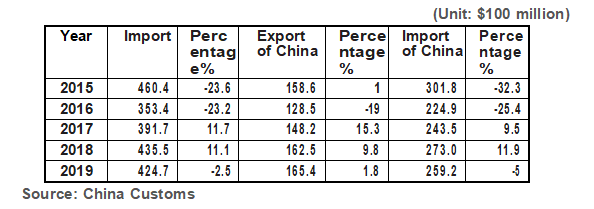
Structure of China's Import from South Africa in 2019

The structure of China's exports to South Africa in 2019
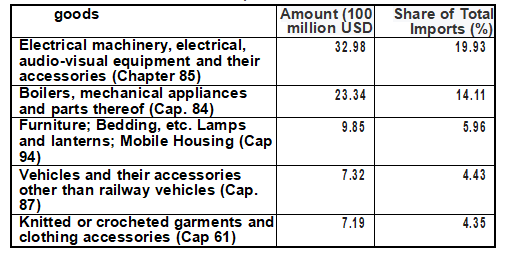
Source: China Customs
South African culture
South Africa is located in the southern hemisphere, known as the "Rainbow Nation". It is located at the southernmost tip of the African continent, with a land area of 1,219,090 square kilometers. It is surrounded by the Indian Ocean and the Atlantic Ocean on the east, south and west sides, and borders Namibia, Botswana, Lesotho, Zimbabwe, Mozambique and Swaziland on land. It faces Australia across the Indian Ocean to the east and Brazil and Argentina across the Atlantic Ocean to the west.
language
There are 11 official languages in South Africa. They are: English, Afrikaans (Afrikaans), Zulu, Xhosa, Spedi, Tswana, Soto, Tsunga, Swazi, Venda and Ndebele.
According to the demographic survey, the top five languages in South Africa are Zulu (30%), Xhosa (18%), Afrikaans (14%), Spedi (9%), and English (9%).
Black people are mainly Zulu, Khosa, Swazi, Tswana, North Soto, South Soto, Tsonga, Venda, Ndebele nine tribes, the main use of the Bantu language. Whites are mainly Afrikaners of Dutch descent (once calling themselves Afrikaners, about 57%) and Whites of British descent (about 39%). Coloured people are descendants of a mixed race of colonialists, Aborigines and slaves, who speak mainly Afrikaans. Asians are mainly Indian and Chinese.
Literature and Art
South African Art:
In the past, due to a lack of education, art professionals made up only a small percentage of South Africa's population. By the end of the last century, with the rise of the cultural boycott movement, South African artists had gained international recognition. Not only is South Africa home to some of the oldest and finest rock art in the world, but it is also home to a wealth of contemporary masterpieces and other works of art that South Africa is so proud of.
South African Music:
South African music combines local characteristics with those from other countries. Since the colonial times, the indigenous people of South Africa have been influenced by the Europeans and adopted their instruments and musical ideas. Today, South African pop and rock artists have made their way onto the international music scene.
South African Dance:
Classical ballet in South Africa has a long tradition; The Cape Town City Ballet Theatre is South Africa's oldest dance company. After the end of apartheid, dance became the most important form of artistic expression. South African dance is dynamic and highly acclaimed.
South African Theatre:
South Africa offers visitors a wide variety of theatre experiences, from indigenous theatre, dance, music and song and dance to classical plays, ballet and West End and Broadway classics. South Africa's theatres are known around the world for their unique excellence. Famous performing arts institutions in South Africa include the National Theatre in Pretoria, the Durban Theatre Company, the Artcape and the Market Theatre in Cape Town, and the Windybrow Theatre in Johannesburg.
Literature of South Africa:
South Africa has produced some of its greatest writers and poets, whose literary works have won many prestigious awards. The works of these writers and poets have enriched the English literary Canon. Famous South African literary prodigies include Alan Paton, JM Coetzee, Allister Sparks, Nadine Gordimer and Zakes Mda. Fiction has been written in all of South Africa's 11 official languages, with the vast majority in
Afrikaans and English.
Sports in South Africa:
South Africans love all kinds of sports, and the most popular sport is football. South Africa's football team is also called "Bafana Bafana". South Africa hosted the 2010 FIFA World Cup, the first African country to host the tournament. Cricket is the second most popular sport in South Africa, and the national cricket team is nicknamed the "Springboks". South Africa has also produced a number of world champions in swimming, track and field, surfing, boxing and tennis.
- Hotspots in the news
Apple (1) South Africa's exports to China strong start, increased five times information _ _ _ international food food food partner http://news.foodmate.net/2021/05/592838.html
(2) South Africa's 2020 global food safety index in sub-saharan Africa at the top of https://baijiahao.baidu.com/s?id=1698164068332159946&wfr=spider&for=pc
(3) the Hong Kong food security center: South Africa's gauteng Merafong City Local Municipality of poultry and poultry products suspended imports products information _ _ _ China food partner
http://news.foodmate.net/2021/05/592688.html
- South Africa food prices over the past half year rose nearly 4% in https://baijiahao.baidu.com/s?id=1694511930890319660&wfr=spider&for=pc
(1) the food security situation in South Africa: in sub-saharan Africa still _ leading tencent news at https://new.qq.com/rain/a/20210427A065EY00
(2) South Africa's gauteng confirmed outbreaks of bird flu, but "there's no need to panic", food safety market _ netease to subscribe to https://www.163.com/dy/article/G7L40I4U0514DTKM.html
(3) 20% of the population problem of food safety in South Africa at https://baijiahao.baidu.com/s?id=1693865219570317053&wfr=spider&for=pc
(4) the South African government approved raise chicken import tariff information _ _ _ international food food food partner http://news.foodmate.net/2020/03/553831.html
(5) _ rooibos tea to expand overseas market the international food information _ _ food partner http://news.foodmate.net/2021/05/593058.html
(6) African swine fever will play a promoting effect for the South African exports to China beef industry products information _ _ _ international food partner http://news.foodmate.net/2019/05/520358.html
(7) "rainbow nation, the western maritime lifeline" South African market, the advantage of China's food analysis _ netease to subscribe to https://www.163.com/dy/article/EHA45H94053856R0.html
(8) South Africa's 2020 global food safety index in sub-saharan Africa at the top of 南非2020年全球食品安全指数位居撒哈拉以南非洲地区榜首 https://baijiahao.baidu.com/s?id=1698164068332159946&wfr=spider&for=pc
[Agriculture, Animal Husbandry and Fisheries] South Africa has a relatively developed agriculture. Arable land accounts for about 13 percent of the land area, but high-quality land accounts for only 22 percent of the arable land. Agriculture, forestry and fisheries employ about 6 per cent of the population and export earnings from their products account for 15 per cent of non-mining export earnings. Since the second half of 2015, the drought affecting South Africa's agricultural production has eased significantly. In 2019, the added value of agriculture, forestry, animal husbandry and fishery reached 69.1 billion rand, accounting for 2.2% of GDP. South Africa's agricultural production is obviously affected by climate change. It is rich in flowers, fruits and red wine, etc. It is the ninth largest wool producer in the world, and all kinds of canned food, tobacco, wine and beverage are popular overseas.
Corn is South Africa's main crop, accounting for about 40 percent of the total crop. South Africa's Crop Projection Committee estimates that the country could harvest 7.78 million tons of maize in 2016, down about 22 percent from 9.95 million tons the previous year, because of dry weather and late planting. In 2017, South China's corn output doubled to 16.498 million tons, up 112 percent from the previous year. South Africa's maize production is forecast at 10.51 million tonnes for the 2019/20 fiscal year.
(1) South Africa _ baidu encyclopedia https://baike.baidu.com/item/%E5%8D%97%E9%9D%9E%E9%A6%99%E8%82%A0/8109198?fr=aladdin
(2) Abalone from South Africa, one of the most expensive seafood in the world, is a rare delicacy! _ method
https://www.sohu.com/a/291944535_100265676
(3) taste delicious in South Africa ostrich meat _ north mountain demon _ sina blog http://blog.sina.com.cn/s/blog_4ee5029e0102dyrw.html
South Africa unveils new food labeling rules (R146) - Baidu Academics https://xueshu.baidu.com/usercenter/paper/show?paperid=d6f92ddfc3b385a74032301f3fb28c6b&site=xueshu_se
South Africa solicit opinions from the edible olive standard products information _ _ _ international food partner
http://news.foodmate.net/2020/08/568385.html
7.1 Regulations and policies on foreign trade
7.1.1 Trade authorities
The Department of Trade and Industry (DTI) is the principal government department responsible for managing South Africa's external trade. The International Trade Regulatory Commission of South Africa (ITAC) is responsible for the investigation of trade remedy measures in the Southern African Customs Union region and for the administration and supervision of import and export administration, licensing administration, tariff regime reform, and industrial preferential policies. Other government authorities concerned with trade include the South African Revenue Department and the South African Bureau of Standards.
7.1.2 Trade legal system
The main law regulating import and export trade in South Africa is the International Trade Administration Act. Other relevant laws include the Customs and Revenue Act, the Consumer Affairs Act and the Sales and Services Act. The South African International Trade Regulatory Commission (ITAC) has also enacted anti-dumping, safeguard measures, countervailing, import and export control, tariff investigation and other regulations.
7.1.3 Provisions on trade management
Importers and exporters are required to register with the South African Revenue Department (SARS, under whose jurisdiction the Customs is) (usually 2 to 3 weeks) and obtain a Customs Number. Foreigners must also appoint a local registered agent to represent them in import and export activities.
In 2018, South Africa's MFN simple average tariff rate (WTO-bound) was 8.19%, with a weighted average rate of 7.29%, of which the MFN simple average tariff rate for industrial products was 8.2%.
[Import Restrictions and Licensing] South Africa implements import licensing administration for all used goods and 276 customs HS8-digit goods, including radioactive materials, inflatable tyres, fossil fuels, and ammunition
Medicine, gambling equipment, etc. The importer must apply for an import licence from the International Trade Regulatory Commission of South Africa (ITAC). Application forms can be downloaded from the ITAC website (www.itac.org.za). Some commodities also need to provide mineral resources, agriculture, forestry and fisheries and other government departments authorized documents. The application for import license must be submitted at least 2 weeks before the shipment of the goods, and it usually takes 3-5 working days to complete.
[Export Management System] South Africa's investment in strategic materials (non-renewable resources), agricultural products and waste
Metals and other commodities shall be subject to export license administration. The Minister of Trade and Industry of South Africa is responsible for determining the catalogue of licensed products and publishing it in the Government Gazette. Scrap metal must first be supplied to downstream industries at a discount to the export price. If the downstream manufacturers do not respond or do not need it, the government can issue export licenses. South Africa has also banned the export of ostriches and their eggs. Diamond exporters must be registered with the Diamond Council of South Africa.
7.1.4 Inspection and quarantine of import and export commodities
The South African Bureau of Standards is responsible for the development of safety, health, technical standards, certification and testing of related products. At present, the South African Bureau of Standards provides certification and testing services in 36 categories of products and areas, including: lighting, machinery, metering, medicine, accessibility, personal and property safety, etc.
7.1.5 Customs management rules and regulations
Since 1 October 2006, the South African Revenue Department (SARS) has adopted the European customs declaration form - the Uniform Management Document. All import goods shall be declared to the customs with unified control documents and other documents. Most customs offices can handle electronic customs clearance. The electronic customs clearance data shall comply with the classification requirements of the customs and be accompanied by printed documents. The importer is required to retain the relevant customs documents for at least five years. In order to speed up customs clearance, the Customs has also implemented electronic clearance for container goods in some areas in cooperation with port authorities. South Africa's current Customs Tariff Schedule is the latest version as of 1 April 2019.
Tariff rates of major imported products

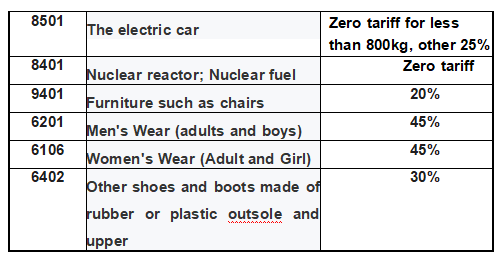
Source: SARS Data released September 4, 2020
Website:
www.sars.gov.za/AllDocs/LegalDoclib/SCEA1964/LAPD-LPrim-Tariff-2012-04%20-%2 0Schedule%20No%201%20Part%201%20Chapters%201%20to%2099.pd
(1) sales of dairy products in South Africa and imitation of dairy products classification, packaging and labeling regulations _ _ foreign laws and regulations policy and regulations _ _ food center food partner http://law.foodmate.net/show-198901.html
(2) the General Administration of Customs on imported South African citrus reefer transport quarantine requirements of the notice (the General Administration of Customs announcement no. 207 2018) _ _ national center for policy and regulations _ _ food rules and regulations food partner http://law.foodmate.net/show-194723.html
(3) the General Administration of Customs on imported South Africa clover, inspection and quarantine requirements of the notice (the General Administration of Customs announcement no. 189 2018) _ _ national center for policy and regulations _ _ food rules and regulations food partner http://law.foodmate.net/show-194636.html
(4) quality supervision, inspection and quarantine on imported fresh apple plant inspection and quarantine requirements in South Africa's announcement (13 2015) _ the national laws and regulations policy and regulations _ _ food center _ food partner
http://law.foodmate.net/show-185875.html
- the 18th, 2021 in Johannesburg, South Africa international food industry show Big Seven_ outreach
http://www.yshows.cn/zhanhui/1944.shtml
The basic information
Name (English) : The Big Seven of the 18th Johannesburg International Food Industry Fair in 2021
Name (English) : Big Seven
Exhibition Date: June 20, 2021 - June 22, 2021
Venue: Johannesburg, South Africa
Exhibition cycle: once a year
Organizer: DMG EMS Africa
Organizer: Beijing Zhongling International Exhibition Co., Ltd
Industry attributes
Food, beverage, alcohol, tobacco
Exhibits range
(1) Agricultural products processing and production exhibition: fruits and vegetables, organic food, food ingredients, additives, aquatic products, groceries, cereals;
(2) Food Technology and International Food and Beverage Exhibition: Food processing technology and additives, food machinery, freezing technology, packaging technology;
(3) Pan-African Retail Food and Beverage Exhibition Series;
(4) Baking equipment exhibition: baking equipment, baking ingredients, processing equipment;
(5) Dairy products and cheese products;
(6) Commercial food services;
(7) Retail and chain: retail technology, retail food, retail channels.
(8) Food ingredients: spices, seasonings, pigment additives, colorants, sweeteners, plasticizers, etc.;
(9) Food packaging: packaging paper, trademark, label paper, aluminum foil paper, oil/moisture proof paper;
(10) food packaging materials and machinery: food processing machinery, food testing technology and equipment, food processing technology and equipment, food testing instruments;
(11) Packaging materials: cloth packaging materials, woven bags; Plastic packaging materials, sponge; Metal packaging materials; Composite packaging materials.
The exhibition to introduce
Africa's Big Seven is the largest food fair in the entire African continent and the only truly international food fair in Africa. The exhibition is divided into seven themed food technology pavilions, namely: African Food Retail Trade, Agro-products Processing and Production, Food Technology and Ingredients, Baking Equipment Ingredients and Processing Equipment, Beverage Products and Processing and Packaging Technology, Retail Solutions, Food Industry Services and Equipment. The show brings together manufacturers, wholesalers, distributors/agents, independent and chain retailers, importers and food services from all over the world.
★ The largest and only truly international exhibition in Africa, exhibitors from 49 countries, a total of 200, the number of visitors reached 14,657 people.
★ High degree of international and professional buyers: Professional buyers from 72 countries, including Britain, France, Canada, Germany, the United States, Italy, Chile, India and some other African countries participated in the exhibition. Most of them hold important positions and have important decision-making power, and some of them can place orders on the spot.
Ninety-four percent of the visitors indicated that they made new business contacts in the exhibition. 89% of the visitors indicated that they would continue to participate in the exhibition next time. 91% of the visitors indicated that they would recommend their business partners to participate in the exhibition.
South African beef in general:
China is the world's third largest producer and consumer of beef, after pork. In recent years, with the improvement of domestic residents' consumption level and the change of consumption concept, the quantity of beef imported by China has gradually increased. According to statistics, in 2016, a total of 239 batches of beef were imported at Xiamen port, totaling 5,52339 tons and 29,089,700 dollars. Importers include Australia, Uruguay, Brazil, New Zealand and Argentina. Among them, Brazilian beef imports ranked the first, a total of 2967.53 tons, the value of 16.4620 million US dollars, accounting for 53.73% and 56.59% of the total imports. Australia and Uruguay came in second and third, respectively.
South African Beef Policy:
In the presence of South African President Jacob Zuma, Li Yuanping, Deputy Director General of the General Administration of Quality Supervision, Inspection and Quarantine of the People's Republic of China (AQSIQ) and South African Minister of Agriculture, Forestry and Fisheries Zuo Quana formally signed the Protocol on South Africa's Frozen Beef Export to China and the Memorandum of Understanding on Cooperation in Entering and Exit Animal Quarantine between China and South Africa, laying a solid foundation for South Africa's conditional beef export to China.
The signing ceremony took place at the launch of the Pagisa Initiative for South Africa's agricultural sector. After the completion of relevant access arrangements between the two countries, South Africa will become one of the African countries that can export beef to China.
South African wines in general:
South Africa is one of the world's six most famous vine-producing regions and produces 3% of the world's wine. Its main wine-producing regions are in the Cape region. The Cape region, at the top of Africa, has a typical Mediterranean climate.
South African grape policy:
During the South African blockade, alcohol-related industries were banned altogether: grape picking was banned, cellars were banned, alcohol transportation was banned, and wine exports were banned.
Grape and wine production is one of South Africa's main exports, contributing 49 billion rand to the country's gross domestic product. The importance of wine exports to the local industry is evidenced by the fact that wine exports account for 60% of the local industrial market.
The harvest of South Africa's wines began in January, and the region was already ready to showcase its products at the world's largest wine fair, Prowein in Germany, in March. Plans were made to engage with the international wine market and provide a new direction for South Africa's wine industry. However, the emergence of COVID-19 led to the cancellation of the exhibition, followed by the government's export ban.
Exports to China:
The Wines of South Africa Trade Organization has released its 2020 Export Report. Exports of South African wine to China have jumped 50 per cent in the past three months, data show.
South African Apple in general:
China has become the world's largest importer of South African apples.
Exports to China:
South African apples exported 2,166.5 tons (173,320 boxes, 12.5 kg/box) to China. Exports increased fivefold compared with 33,707 cases in the same period last year. In the 2020 production season, South Africa exported 471,614 boxes of apples, or about 5,895 tons, to China.
Famous brand Wine
(1)Meerlust Rubicon, Stellenbosch, South Africa
(2)Rupert & Rothschild Vignerons Baron Edmond, Franschhoek Valley, South Africa
(3)KWV Roodeberg Red, Western Cape, South Africa-KWV
(4)Anwilka Ugaba, Stellenbosch, South Africa
(5)Nederburg Baronne, Western Cape, South Africa
(6)Cronier Wines Merlot, Wellington, South Africa
(7)La Motte Shiraz, Franschhoek Valley, South Africa
(8)Leopard's Leap Shiraz, Franschhoek Valley, South Africa
(9)King Protea Cabersso Natural Sweet Shiraz, South Africa
(10)Vergelegen V Red, Stellenbosch, South Africa
(11)Veenwouden Classic Red, Paarl, South Africa
(12)Allee Bleue Starlette Rouge, Paarl, South Africa
Famous Winery
- KWV Wines is the leading wine company in South Africa and has seen the growth of South African wine since its inception. The company is known for its high-quality wines, mainly in the Western Cape, and the best fruit from the vineyards is then sent to the cellar in Paarl for brewing.
(2) Leopard's Leap is a South African winery owned by the Rupert family. With a net worth of $1.7 billion, the Rupert family is among the world's 500 richest people and wields enormous influence over South Africa's economy. The Rupert family is also the majority shareholder of Richemont Group, a global luxury brand group with famous brands such as Cartier, Dunhill, Jag, Montblanc, etc. The family's remarkable success was created by Anton Rupert, a successful business whiz who also has a penchant for wine.
(3) La Motte, located in South Africa's scenic Franschhoek Valley, is owned by the Rupert family, which also owns Leopard's Leap, a famous South African winery.
(4) Groot Constantia is South Africa's oldest wine estate, dating back more than 300 years. Located in South Africa's Constantia region, the winery has been listed as one of six must-see attractions in Cape Town. The Chateau de Guteconstantia is set like a jade in a sea of rolling vineyards. Through the white gates of the winery, a road lined with ancient cypress trees leads into the quiet depths of the winery, and through the ancient trees that shade the sun look out neat rows of lush vineyards. The main building of the chateau is the white Dutch-style Mansion, located in the backward part of the chateau. Now, it has become a wine museum.
(5) Anthonij Rupert is located in South Africa's Franschhoek Valley wine region. It is now one of the brands of L 'Ormarins. The wine grapes used by Rupert Chateau are Cabernet Sauvignon, Cabernet Franc, Merlot, Syrah, Optima, etc. The main production of red wine, Anthonij Rupert Blend 2007, Anthonij Rupert Cabernet Franc 2008, Anthonij Rupert Cabernet Sauvignon 2008, Anthonij Rupert Syrah 2007, Anthonij Rupert Merlot 2007.
(6) Nederburg Winery has a history of more than 200 years since its foundation in 1791. The winery is the most successful brand of Distell, South Africa's largest brewer, which is owned by SAB Miller, the world's second largest brewer, and has a strong foundation and a strong history. The success of Chateau Niederborg is due to the owner's vision and attitude to wine making. Today the Niederborg winery is one of South Africa's premier wineries. Over the years, the winery has won more than 200 awards in the International Wine and Spirits Competition in London, and is regarded as the most successful winery in South Africa to date.
(7) La Couronne is located in the Franschhoek Valley wine region on the coast of the Western Cape, South Africa.
Fleur du Cap Wines is on the banks of the Lourens River, 30km south-west of Cape Town. Cape Winery is one of South Africa's best known wineries and is also part of the Distell Group. The history of the Cape Chateau dates back to 1968, and its first vintage was produced shortly after the chateau was founded. In 1979, the chateau chose the French new cask as the first choice. In 1998, the winery released an unfiltered Cape Chateau vintage.
(9) Located in Durbanville Valley in the Western Cape, Diemersdal is one of the oldest wineries in South Africa and the iconic building of the Durbanville Valley.
Cape Diamond Wines is a company owned by Lutzville Vineyards, the second largest winery in South Africa, located in the Western Cape wine region.
(11) Simonsig is located in the Stellenbosch, a famous wine country in South Africa. With a history of more than 350 years, the wine produced by this winery is of outstanding quality and has won numerous awards at home and abroad.
(12) Plaisir de Merle is located in the Coastal Region of the Western Cape wine Region of South Africa. The winery successfully combines traditional and modern winemaking techniques to create a unique range of South African wines.
- Professional data
(13) With good infrastructure and advanced technology, South Africa is the most economically developed country in Africa, with its GDP equal to the sum of the other countries in sub-Saharan Africa. Foreign trade has always been a major part of South Africa's economic activities.
(14) According to Chinese customs statistics, the trade volume between South Africa and China reached 59.94 billion in 2012, an increase of nearly 40 times over 1997. In recent years, South Africa's retail food market has been valued at $7.4 billion;
(15) As a founding member of the WTO, South Africa practices a free trade system and is a major trading country on the African continent. Its total import and export volume ranks first among African countries. As of July, China was South Africa's largest trading partner, its largest export market and its largest source of imports, followed by the United States, Japan, Germany and India, according to South Africa's Internal Revenue Service. Known for precious metals and agricultural products such as fruit and wine, South Africa has transformed itself from an agricultural and mineral-dominated economy to one based on sophisticated manufacturing and services. In the first quarter of 2014, services accounted for about 70 percent of South Africa's GDP, while agriculture and mining accounted for only 1.9 percent and 4.9 percent of the country's economic output, respectively.
South Africa's main agricultural resources are poultry, beef and mutton, corn, fruits and so on, its cultivation of citrus quality, is the world
The main raw material of the world famous juice brand. South Africa is the ninth largest wine producer in the world, with exports of 320 million liters in 2019; The South Africa-bred Boer goat is the world's best known meat goat breed. South Africa wool, wine, ostrich products and other production are in the world's forefront.
- the beef imports in China will become the dominant force in the world's beef exports https://xw.qq.com/cmsid/20200221A0EIZW00| | beef exports
(2) the panoramic view of the bilateral trade between China and South Africa in 2018 (with central south main import and export industry data) _ netease to subscribe to https://www.163.com/dy/article/ELE71EEJ051480KF.html
(3) in December 2020, South Africa's trade in goods and bilateral trade profile at https://baijiahao.baidu.com/s?id=1690663744967933801&wfr=spider&for=pc
(4) South Africa raisins marketing launch in China Annual output will reach 10 million cases of https://baijiahao.baidu.com/s?id=1696112396853068849&wfr=spider&for=pc
(5) the South African exports to China of 2019 R1200 $_ https://www.sohu.com/a/368284694_778452
(6) South Africa's wine exports to China have increased sharply. What are the problems that domestic distributors are concerned about? https://weibo.com/ttarticle/p/show?id=2309404608775741898789
Chinese Embassy and Consulate General in South Africa
Embassy of the Republic of South Africa
Ambassador: Chen Xiaodong
225 Athlone Street, Arcadia 0083, Pretoria, South Africa
P.O.Box 95764, Waterkloof 0145, Pretoria,South Africa
Tel: 0027-12-4316500
Fax: 0027-12-3424154
Website: http://za.china-embassy.org
http://za.chineseembassy.org
Consulate-General in Durban (South Africa)
CONSULATE-GENERAL OF THE PEOPLE'S REPUBLIC OF CHINA IN DURBAN
Consul General: Fei Mingxing
Location: 45 Stirling Crescent, Durban North, Durban 4051
Telephone: 0027-31-5634534
The true: 0027-31-5634827
Web site: http://durban.china-consulate.org
http://durban.chineseconsulate.org
Consulate-General in Johannesburg (South Africa)
CONSULATE-GENERAL OF THE PEOPLE'S REPUBLIC OF CHINA IN JOHANNESBURG
Consul General: Tang Zhongdong
25, Cleveland Road, Sandhurst, Sandton Johannesbrurg, Republic OF South Africa
Box: P.O.Box 413186 Craighall 2024 Johannesburg, Republic OF South Africa
On duty: 0027-71-5111494
Consular Document Enquiry (Voice) : 0027-11-8844006/6857549
Consular documents consultation (manual) : 0027-11-6857562
Fax: 0027-11-8835274
E-mail: chinaconsul_jb_za@mfa.gov.cn
Website: http://johannesburg.china-consulate.org
http://johannesburg.chineseconsulate.org
Consulate-General in Cape Town (South Africa)
CONSULATE-GENERAL OF THE PEOPLE'S REPUBLIC OF CHINA IN CAPE TOWN
Consul General: Lin Jing
25 Rhodes Ave. Newlands, Cape Town
P.O.Box 23301, Claremont, 7735 South Africa
Tel: 0027-21-6740579
Website: http://capetown.china-consulate.org
http://capetown.chineseconsulate.org
E-mail: chinaconsul_ct_za@mfa.gov.cn
Commercial and Economic Office of the Chinese Embassy in South Africa
The Commercial and Economic Office of the Chinese Embassy in South Africa can provide advice and guidance for Chinese enterprises to conduct investment cooperation in South Africa. The Business and Commercial Office of the Chinese Embassy in South Africa is located in Tswane, the administrative capital of South Africa.
986 Park Street, Arcadia, Pretoria
P.O. Box 12362, Hatfield, Pretoria, 0028, Republic of South Africa
Tel: 0027-12-4313060
Email: za@mofcom.gov.cn Fax: 0027-12-3428071
- South African Embassy and Consulate in China
Embassy of the Republic of South Africa
Embassy of the Republic of South Africa
Chancery: 5 Dongzhimen Wai Dajie
Chancery: No.5, Dong Zhi Men Wai Da Jie
Tel: 85320000
Fax: 65327319
Url (Website) : www.dirco.gov.za/beijing/index.html
Consulate General of the Republic of South Africa in Shanghai
Consulate General of the Republic of South Africa in Shanghai
Chancery: Room 2706, Bund Center, 222 Yan 'an East Road, Shanghai
Chancery: Room 2706,The Bund Center, 222 East Yan'an Road, Shanghai
Tel: 021-53594977
Fax: 021-63352980
Area: Shanghai, Zhejiang, Jiangsu, Anhui, Shandong, Fujian, Guangdong
District: Shanghai, Zhejiang, Jiangsu, Anhui, Shandong, Fujian, Guangdong
- Trade and Economic Organizations (Associations of Commerce)
South African Economic and Trade Agency
South African Ministry of Trade and Industry
Telephone: 0027-12-394 9500
Fax: 0027-12-934 9501
Email address: contactus@thedti.gov.za
Website: http://www.thedti.gov.za/
South African Department of Finance
Telephone: 0027-12-315 5111
Website: www.treasury.gov.za
Statistics South Africa
Telephone: 0027-12-310 8600
Website: www.statssa.gov.za
South China Economic and Trade Association
South Africa-China Economic and Trade Association was established in April 2011. Its predecessor was South Africa-China Chamber of Commerce and Industry, which was registered and established in Johannesburg in 2001. Currently, it has 120 member companies. As elected by the General Assembly, Jobu Branch of China Construction Bank is the president unit and COSCO Shipping Africa Co., Ltd. is the executive vice president unit. The bank of China, Johannesburg, sinosteel South Africa co., LTD., China's car in South Africa co., LTD., China railway international company in South Africa, hisense South Africa company, the office of state grid in Africa, faw company in South Africa, South Africa company huawei, zte South Africa company, representative office of industrial and commercial bank of Africa, jinchuan river South Africa, chrome ore in South Africa for the first industry, steel, China in turbine company in South Africa, in South Africa company China Telecom South Africa Company, Baiyin Nonferrous South Africa Company and other 16 companies as vice president units. 2017, South Africa China Economic and Trade Association
Organized or participated in the reception for the 68th anniversary of National Day and the visit of Vice Premier Liu Yandong to South Africa
We will hold a series of activities related to China-Africa cultural and people-to-people exchange activities, organize exchanges and training among members, and increase support for charity and public welfare activities. In June 2019, the Fifth Council of South Africa-China Economic and Trade Association was established, at which State Grid Africa Office was elected as the president unit and Bank of China Johannesburg Branch as the executive vice president unit.
Tel: 0027-11-4690405
E-mail: hexiangpeng@saceta.co.za
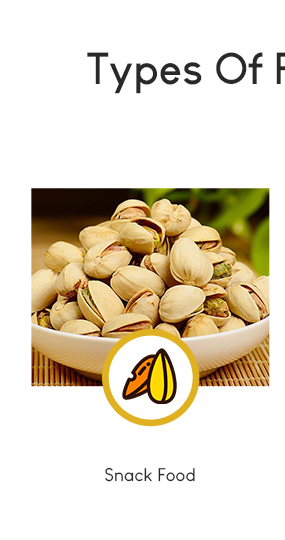 |
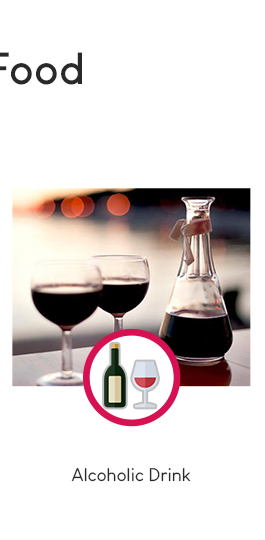 |
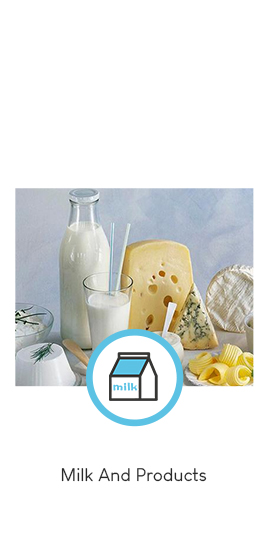 |
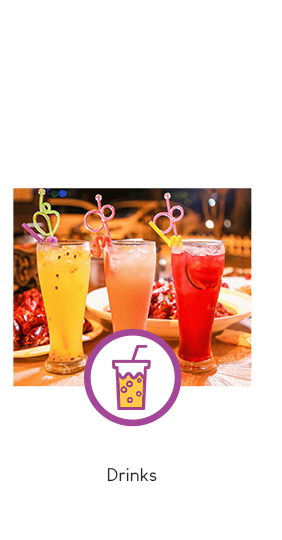 |
||
 |
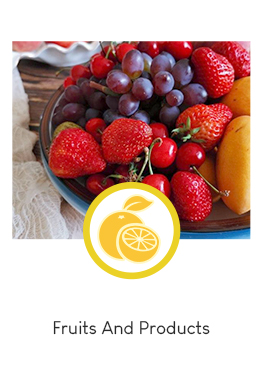 |
 |
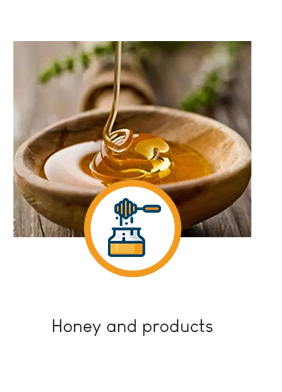 |
||
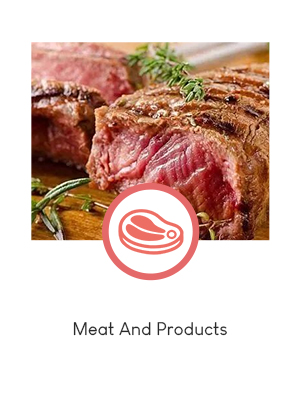 |
 |
 |
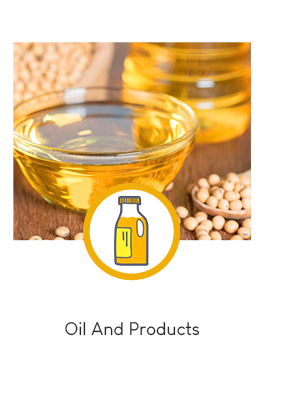 |
||
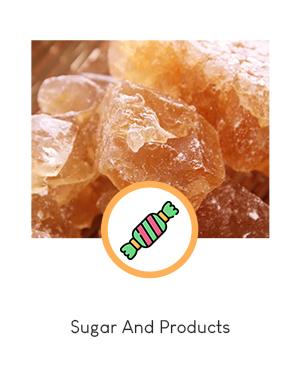 |
 |
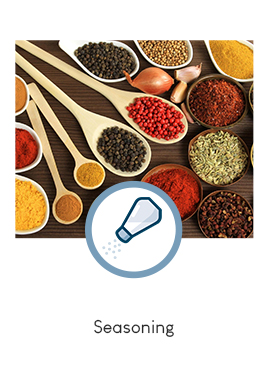 |
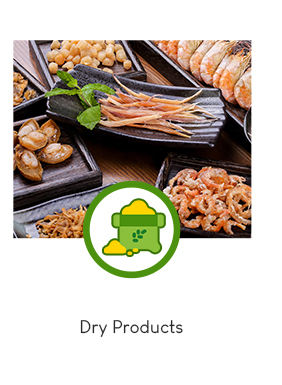 |
||
 |
|||||
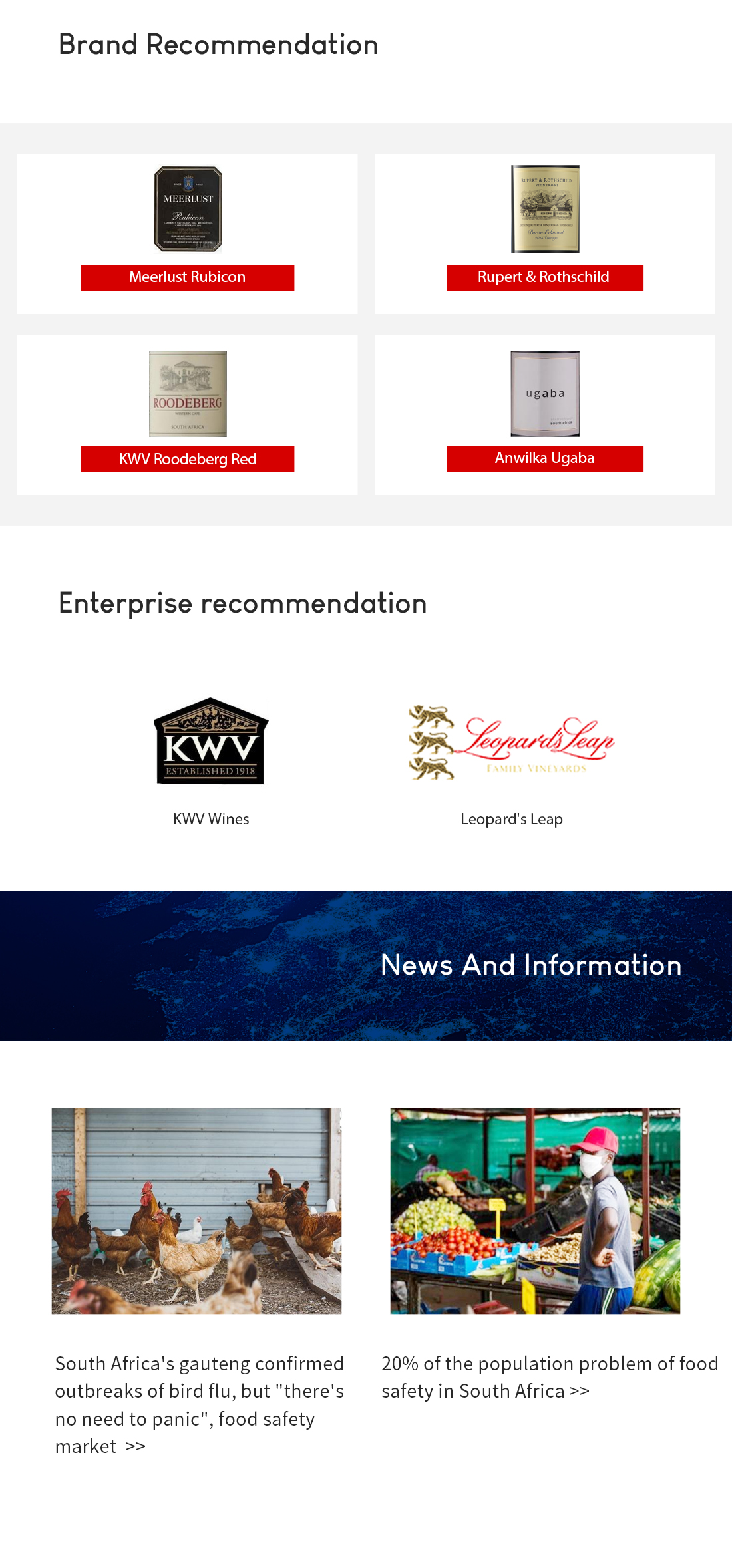

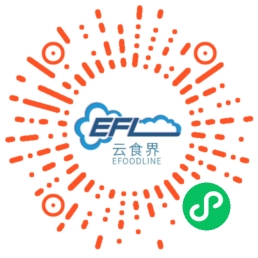 微信小程序
微信小程序